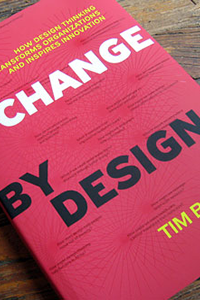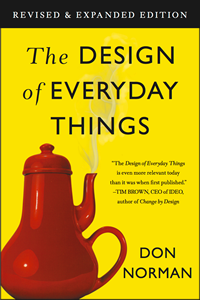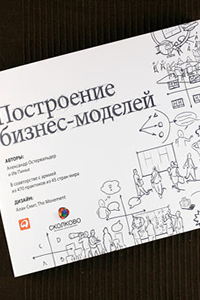Winter holidays with benefits

Just a story about 5, in my opinion, interesting books.
Hi, {{habrauser}}.
Soon the long-awaited New Year's holidays, and you, probably, have already planned how to spend them. Games, mountains, trips, TV (seriously?). For myself, I decided that I wanted to make a career breakthrough and just learn how to do better, what I’m doing now is managing Internet projects. It must be said, to study in my (28) age is quite difficult. If at school or university, knowledge still lay flat on a blank sheet of my experience, habits and understanding, now everything is different. Learning is a process of inner change, I have to rewrite existing knowledge with new ones. Start doing something different. But the reward is also great - a new result, a new experience, an expansion of consciousness, and just to live that way is more interesting.
')
Well, for this difficult purpose, I selected several books and made a plan that includes theory and practice. Books are mostly about designing new products and improving existing ones. Innovations, you know.)
In the beginning I spoke about the plan for reading and learning the material. To do this, I'm going to go all the way to create a new product, using the knowledge gained during the reading. I suppose that the ratio theory / practice will be 4 to 6. Some pressing, the course of events I will lead in my twi .
I took this topic for a reason. Because I took a course on design thinking at Coursera, and I was fortunate to participate in the Digital October knowledge laboratory.
Designing for Growth: A Design Thinking Toolkit for Managers

I got acquainted with the first book during the passage of an online course on design thinking on Coursera. This is a fairly detailed manual on the tools and the process of design research. Since I am a student of a design thinking course based on the Digital October knowledge laboratory, I read this book, of course, like many others on this topic. But now the first wave of the course is completed and I have acquired, let's say, a holistic understanding, I will reread the book. Important message: dear project managers \ products, marketers, designers, this book is obligatory for you to read, it will open your eyes to many things and allow you to improve your work qualitatively.
A few useful additions on design thinking:
- Articles and presentations of our teacher and, perhaps, one of the main design thinkers of our country, Ekaterina Khramkova.
- Course on Coursera
- Course from Stanford University (d.school)
So, for reading the books and reviewing the course (Coursera) I take 1.5 days for myself and 1.5 days for the “Understanding” stage (for more, see the book). In other words, by January 4, I will form a research topic (product); I will find how a person comes into contact with this product and identify the most problematic points (or, as they are also called, the gap). The results of the stage: journey map, insights, the best problem to solve.
Change by design

The second in turn is a book by Tim Brown, one of the founders of design thinking, the CEO of the well-known IDEO company. The book tells about ... design thinking.) Tim also wrote the book “Design thinking in business. From developing new products to designing business models. ” Additionally, you can watch Tim's talk on TED, under the theme “ Designers - think big! ” Or read his blog Thoughts by Tim Brown .
After reading this book, I’ll move on to the “Focus” stage, where you need to confirm that the problem found is really worth solving, and put together a team to start building hypotheses on how to solve it. To do this, I will use the brainstorming and methods of the Co-Creation Tool, if there is a person in the team who is familiar with the practice of a world cafe, then we will try it. Let's form a pool of ideas, select a few, talk about them with the problem users (stakeholders) and select 3 solutions from the pool. This will take 3 more days (January 5 - 7).
The Design of Everyday Things: Revised and Expanded Edition

The cult book, first published in 1988, was supplemented and reprinted some time ago. I also met her on online courses, only this time on Udacity. Don Norman, the author of the book, leads the course “ Design of Everyday Things ” there, the book of the same name, it’s not too late to join the course. The book talks about designing products in accordance with human psychology, habits and traditions. In other words, how to make the product simple and convenient to use.
By the end of the book I will try to make preliminary tests of each decision. It’s too early to prototype, so I’ll just talk to people, describe the solutions for them and just listen to what they say. I am almost sure that the decision and its wording will change.
About the interface

Ask any usability reader what to read on the topic, and in response you will receive the name of one of two books: “Psychological hospital in the hands of the patient” or “About the interface”. Both written by Alan Cooper are the most basic in this topic. I read the first one, but I only recently found out about the second one; in one online store it is sold at a “pay what you want” price.
It is time to give the solution a more tangible look, so that it can be touched, seen and tried in work. I'm going to assemble a paper prototype (if the solution is a product, not a service) and show it to the first users. They'll do the opposite, and that's awesome. At this stage, I plan to spend 4 days (January 8 - 11).
Lean ux

It should be a useful book, since Alexey Nikolaev from Intel Russia advised it to me. Yes, and on the Amazon a lot of good reviews:
Good follow up read after Lean Startup and Lean Analytics. It covers both the philosophical as well ...
In the meantime, I come to the final part of my research. I check the insights found at the start and whether they work correctly in the created prototype. In other words, I am doing a prototype> testing> prototype> test. I think the book will help me in this process.
But the research is not yet complete, it is not enough to create a product. You need to think about his business model. And the 6th book will help me in this, it is still in my large and rather distant plan. But I want to tell you about her.
Building business models

Design studies are used both at the stage of product creation (NPD - New Product Development), and when designing a business model. This book is a great help, and the BMC (Business Model Canvas) template has become world famous. I have already used this technique, it allows me to look at all the components of the process, as if from a height, to see the big picture. If you already have a working business, try decomposing it according to a pattern and you may see new features.
Acknowledgments
I want to express my deep gratitude: Digital October for organizing the course, course curators and our friends Ekaterina Khramkova (Lumiknows) and Alexey Nikolaev (Intel Russia) for one more “bulb” in my head. And of course, everyone who read to this place and did not fall asleep.)
Source: https://habr.com/ru/post/148698/
All Articles